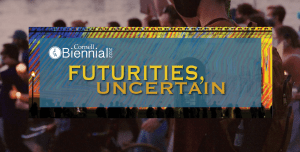
Urban and Regional Studies (URS) student Kellen Cooks ’23 was recently awarded a Cornell Council of the Arts grant for his Dreaming-on-Hudson project, which was selected for the Cornell Biennial.
Cooks’ Dreaming-on-Hudson project aims to develop and test creative approaches to mapmaking alongside Hudson Valley high school students to define the endless ways that they understand the past and present of their communities, and dream about the future of them.
His project uses maps to mix past-, present-, and future-focused activities together and help students understand how their own communities and the region have been shaped by American history, understand the places that are presently valuable in their local communities, and engage in thinking about how they’d like to see their community and region evolve into the future.
Cooks describes the goals of Dreaming-on-Hudson as providing a personal connection to American social studies curriculum for students in the Hudson Valley, acknowledging the unique view that young people have about their communities, and empowering local high-schoolers to dream about their communities and tell stories about how they identify with their home.
“This project is rooted in the Hudson Valley, for one, because it is where I grew up and graduated from [Ossining High School], but also because it is a region with a deep history of change and dreaming about the environment. Ghost stories and fantasies about the environment from the 1800s grew to define the image of the Hudson Valley far into the future. These past images remain, even as the region has evolved so much over time. The Hudson Valley I’ve grown up in is uniquely socioeconomically, culturally, and ecologically diverse. As we march deeper into the 21st century marked by a changing economy and a global pandemic, the future is gray and flexible. Children dream, activists organize, planners plan, developers develop, politicians promise, yet everyone is grasping at strings for what comes next.”
After graduating from Cornell, Cooks aspires to dream alongside communities about the future and help make those dreams a reality within their landscape, especially for communities who often lack the privilege to turn their spatial dreams into a reality. He leaves the door open for working in housing policy, teaching at a high school, getting a Ph.D., participating in community organizing, or getting involved with politics.
“I’m still exploring which of these different pathways are for me, but I know that thinking about the power behind how people imagine places and environments is the core of what I’d like to do in the future.”